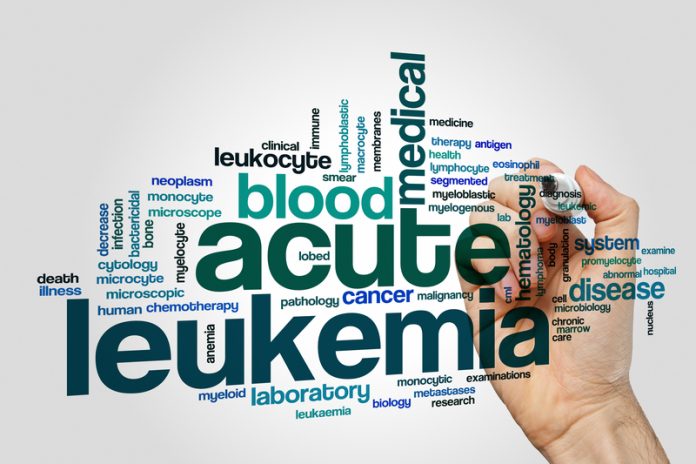The current state of metabolomics research and application in Acute Myeloid Leukaemia is placed under the spotlight by Bradley Stockard and Jatinder Lamba from Department of Pharmacotherapy and Translational Research, University of Florida
Acute myeloid leukaemia (AML) represents 1.3% of all new cancer cases, with 21,380 new cases anticipated in the United States in 20171. AML is a clinically challenging and heterogeneous disease that can become rapidly fatal if untreated. Despite continuing advances in treatment options, global 5-year survival rates are approximately 27% for adult patients and 60% for paediatric AML patients2.
The heterogeneous nature of AML is characterised by the presence of numerous genetic lesions and chromosomal abnormalities present in its many subtypes. Although the most common mutations in AML have been defined, there is still a gap in our understanding of the molecular mechanisms underlying the variation in survival outcomes.
Due to these challenges, there is an ongoing search for molecular markers that can improve prognosis assignment and prediction of treatment and survival outcomes in AML patients. For the most part, studies conducted to identify these predictive markers have been focused on genomics and epigenomics based methods. However, the growing field of metabolomics has shown significant results in many forms of cancer and haematological malignancies. In the case of AML, metabolomics research has been very limited, but the results have been promising. This article reviews the literature currently available for AML metabolomics.
In vitro metabolomics of drug response
One of the earliest studies in AML metabolomics, was an in vitro metabolomics study conducted on AML cell lines3. The objective of this study was to use nuclear magnetic resonance (NMR) metabolomic profiling to study the effect of bezafibrate (BEZ) and medroxyprogesterone acetate (MPA) on AML cell lines and provide evidence for the underlying mechanism of action of BEZ and MPA. The cell lines showed significant changes to tricarboxylic acid (TCA) cycle intermediates following exposure to BEZ and MPA in the form of an increased conversion of alpha-ketoglutarate to succinate. This study shows the potential benefit of conducting in vitro metabolomics studies to explore the impact of drug treatment in AML cell lines. Specifically, these results highlight the importance of energy production pathways for AML cells, an ongoing area of focus in AML metabolism studies.
Application of glucose targeted metabolomics in AML prognosis
Rapid cellular proliferation is a major feature of many forms of cancer, including AML. This feature of elevated proliferation requires AML cells to upregulate multiple metabolic pathways involved in energy production, such as glycolysis and the TCA cycle4. A particular feature of TCA cycle reprogramming in AML involves mutations in the gene encoding for isocitrate dehydrogenase 1 and 2 (IDH1 and IDH2). IDH isoforms normally catalyse the decarboxylation of isocitrate to form α-ketoglutarate, an essential step in the TCA cycle. However, mutant forms of IDH gain an additional function of catalysing the conversion of α-ketoglutarate to 2-hydroxyglutarate (2-HG). These changes to glucose metabolism have been of particular interest in AML metabolomics studies.
Recently, two major metabolomics studies have been conducted for adult AML patients, targeting glucose related metabolites for investigation. In the first study, patients were enrolled in a clinical trial to evaluate the prognostic value of serum 2-HG levels in AML patients5. Results showed that 2-HG could be used effectively as a prognostic factor in patients that were positive for IDH1/2 mutation.
A follow up study was conducted by the same group to evaluate the prognostic value of 10 different metabolites related to glucose metabolism in adult AML patients6. The investigators determined that increased abundance of five of these glucose metabolites, including lactate, 2-oxoglutarate, pyruvate, 2-hydroxyglutarate and glycerol-3-phosphate, were significantly associated with worsened survival outcomes. The investigators used these metabolites to develop a prognosis risk score for each study patient. Ultimately, the results showed that prognosis risk scoring was able to predict poor survival outcomes in low scoring patients without the use of other prognostic factors. Together, these studies have helped confirm the importance of altered glucose metabolism in AML and they support the potential clinical relevance of metabolomics for AML patients.
Global metabolic profiling in AML
While the exploration of altered glucose metabolism in AML continues to yield significant results, the changes to many other metabolic pathways are not as well understood. To address this, multiple studies have taken a more untargeted approach to AML metabolic profiling to evaluate global changes to metabolism. A study by Wang, Y et al. using 1H NMR spectroscopy found significant differences in multiple metabolic pathways between healthy controls and AML patients, including glycolysis, TCA cycle, protein and lipoprotein biosynthesis, fatty acid metabolism and cell membrane component metabolism7.
Another study by Musharraf et al. involved the global metabolic profiling of AML patients, as well as acute lymphoblastic leukaemia and aplastic anaemia patients. 27 metabolites were found to be significantly different between leukaemia patients and healthy controls8. Related metabolic pathways included fatty acid and ketone body metabolism and steroid hormone biosynthesis.
Finally, a more recent study conducted by Tan et al. focused on differentiating metabolic profiles of AML patients who achieved complete remission with cytarabine and anthracycline chemotherapeutic regimens as compared to those who were non-responders9. The study identified two differential metabolites of interest, dodecanamide and leukotriene B4 dimethylamide, which the investigators were able to use to differentiate patients according to clinical response successfully. Ultimately, global metabolomics studies of AML have helped reinforce the role of glucose metabolism in AML disease progression and establish the importance of other metabolic pathways associated with AML, such as fatty acid metabolism.
Conclusion and future directions
Overall, the current body of research for AML metabolomics shows that this type of study can be successfully applied to improve our understanding of AML disease progression and characteristics, as well as the significant variation in clinical outcomes between AML patients. Many of these studies have identified glucose metabolism and fatty acid metabolism as metabolic pathways significantly associated with AML. However, there have been relatively few AML metabolomics studies published, even compared to many other cancer types.
Additional research is needed to further elucidate the metabolic pathways linked to the AML disease state. Ideally, metabolomics data can be integrated with additional ‘omics’ data to fully explain the path from gene to phenotype and help contribute to personalising AML evaluation and treatment for the individual patient. The current contributions of metabolomics to understanding AML are promising and its potential continues to be realised with growing interest in the field.
Acknowledgements
Funding from National Cancer Institute –R01-CA132946 supports AML research in Lamba Lab.
References
1 “Surveillance, Epidemiology, and End Results Program.” Leukemia. National Cancer Institute, May 2016.
2 Vardiman JW, Thiele J, Arber DA, et al. The 2008 revision of the World Health Organization (WHO) classification of myeloid
neoplasms and acute leukemia: rationale and important changes. Blood. 2009; 114:937–951.
3 Tiziani S, et al. “Metabolomic Profiling of Drug Responses in Acute Myeloid Leukaemia Cell Lines.” PLoS ONE 4.4 (2009).
4 Hanahan D, Weinberg RA. “Hallmarks of cancer: the next
generation.” Cell. 2011;144(5):646-674.
5 Wang JH, et al 2013. “Prognostic Significance of 2-hydroxyglutarate Levels in Acute Myeloid Leukemia in China.” Proceedings of the National Academy of Sciences 110.42 (2013): 17017-7022.
6 Chen, et al. “A Distinct Glucose Metabolism Signature of Acute Myeloid Leukemia with Prognostic Value.” Blood 124.10 (2014): 1645-654.
7 Wang Y, et al. “Rapid Diagnosis and Prognosis of de novo Acute Myeloid Leukemia by Serum Metabonomic Analysis.” J. Proteome Res. 2013, 12, 4393−4401.
8 Musharraf S G, et al. “SERUM metabolomics of acute lymphoblastic leukaemia and acute myeloid leukaemia for probing biomarker molecules.” Hematol Oncol. 2016.
9 Tan G, et al. “Pharmacometabolomics identifies dodecanamide and leukotriene B4 dimethylamide as a predictor of chemosensitivity for patients with acute myeloid leukemia treated with cytarabine and anthracycline.” Oncotarget. 8.51: 88697-88707. 2017.
Please note: this is a commercial profile
Bradley Stockard
Jatinder Lamba
Department of Pharmacotherapy and
Translational Research
University of Florida












